 Last additions - Koka 甲賀市 Last additions - Koka 甲賀市 |

Rental bicycles at Shigaraki Station.Feb 24, 2022
|
|
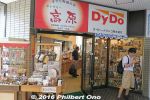
Gift shop inside Shigaraki Station. In case you forgot buy someting for someone before you leave Shigaraki.Feb 24, 2022
|
|
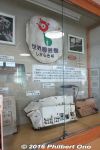
Display case in the corner shows a few pieces from the wrecked train in the 1991 accident.On the morning of May 14, 1991, a Shigaraki Kogen Railway train bound for Kibukawa collided head on with a special JR West train traveling from Kyoto to Shigaraki. It left 42 people, including five SKR employees, dead and 614 injured. Also see photos below of the monument near the accident site.Feb 24, 2022
|
|
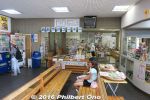
Inside Shigaraki Station waiting area. There's a display case in the corner.Feb 24, 2022
|
|
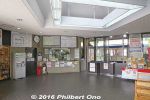
Inside Shigaraki Station.Feb 24, 2022
|
|
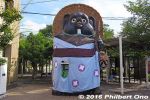
By now, you will notice that the tanuki (racoon dog) is the symbol of Shigaraki. This giant tanuki greets you at Shigaraki Station. Wish they removed that pay phone.Feb 24, 2022
|
|
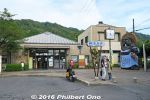
Shigaraki Kogen Railways Shigaraki Station. You can take a bus to reach Shigaraki Ceramic Cultural Park in 5 min., or walk for 20 min. 信楽駅Feb 24, 2022
|
|

Local sights.Feb 24, 2022
|
|
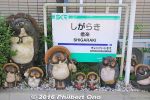
Tanuki greet you at Shigaraki Station.Feb 24, 2022
|
|
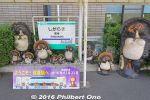
More tanuki greet you at Shigaraki Station.Feb 24, 2022
|
|
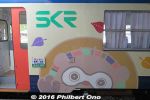
Shigaraki Kogen Railway train.Feb 24, 2022
|
|
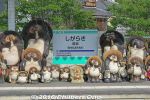
Shigaraki Station platform decorated with tanuki raccoon dogs.Feb 24, 2022
|
|
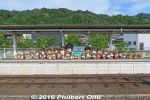
Shigaraki Station platform decorated with tanuki raccoon dogs.Feb 24, 2022
|
|
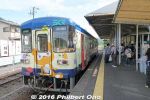
Shigaraki Station on the Shigaraki Kogen Railway Line. One-car train, diesel powered.To reach Shigaraki by train, first get on the JR Kusatsu Line, get off at Kibukawa Station where you transfer to the Shigaraki Kogen Railway Line.Feb 24, 2022
|
|
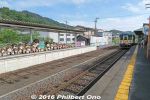
On the Shigaraki Kogen Railway Line, get off here at Shigaraki Station at the end of the line. 信楽駅 MAPFeb 24, 2022
|
|
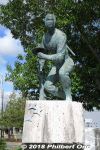
Ninja statue in front of JR Koka Station, Shiga Prefecture.Feb 24, 2022
|
|
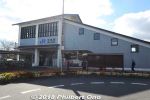
JR Koka Station on the JR Kusatsu Line opened its new station building in Nov. 2005. Resembling a farmer's warehouse on the outside, the inside has a number of surprises. MAPNorth sideFeb 24, 2022
|
|

Video of Shigaraki Festival.Jun 17, 2020
|
|

My video of Tsuchiyama Saio Princess Procession held in 2018.May 13, 2020
|
|

Shigaraki taiko drummers' main competitor for attention was the smartphone (or maybe Pokemon Go).Jul 24, 2016
|
|

Shigaraki taiko drummersJul 24, 2016
|
|

The Shigaraki taiko drummers were very good. 信楽太鼓「炎」Jul 24, 2016
|
|

Next to the fire were taiko drummers entertaining the crowd.Jul 24, 2016
|
|

The Shimin Center parking lot had a large fire where the torch bearers dumped their torches at the end of the route.Jul 24, 2016
|
|

The torch bearers end up at the Shimin Center parking lot (where the pottery festival is held in autumn).Jul 24, 2016
|
|

Jul 24, 2016
|
|

Then they turn right and go along the river toward Atago Shrine.Jul 24, 2016
|
|

Jul 24, 2016
|
|

Crossing Asahi Bridge.Jul 24, 2016
|
|

Not a crowded festival at all.Jul 24, 2016
|
|

First they go along the main street toward Shigaraki Station. In the background is a Shigaraki pottery shop.Jul 24, 2016
|
|

Torch bearers pass through the torii as they leave the shrine.Jul 24, 2016
|
|

Now the kids light their torches and off they go.Jul 24, 2016
|
|

Jul 24, 2016
|
|

Jul 24, 2016
|
|

Jul 24, 2016
|
|

They all carry the torches on their shoulders.Jul 24, 2016
|
|

Shigaraki Fire Festival in late July in Koka, Shiga Prefecture.Jul 24, 2016
|
|

Then they started lighting the torches one after another and proceeded along the route.Jul 24, 2016
|
|

First the large torches led the procession.Jul 24, 2016
|
|

Shigaraki Fire Festival: Burned hot and high. It got quite hot even at this distance. I thought my camera would melt.Jul 24, 2016
|
|

Since the wood pile had been drenched with kerosene, it lit up very quickly.Jul 24, 2016
|
|

Bon fire is lit.Jul 24, 2016
|
|

Jul 24, 2016
|
|

A small candle flame inside a lantern dedicated at the shrine is carried to the large pile of wood at around 7:30 pm.Jul 24, 2016
|
|

They held a Shinto ceremony at the shrine from 7 pm to 7:25 pm.Jul 24, 2016
|
|

Before 7 pm, they light a few fire lamps.Jul 24, 2016
|
|

Pouring kerosene into the large torches.Jul 24, 2016
|
|

The torch procession route will be lined with paper lanterns in front of the shrine.Jul 24, 2016
|
|

Chinese protest drum with a rooster on top symbolizing peace in the land.Jul 24, 2016
|
|

Reception counter for torch bearers.Jul 24, 2016
|
|

Shingu ShrineJul 24, 2016
|
|

Shingu ShrineJul 24, 2016
|
|

Smaller torches on the side. Torch bearers make their own torches using the provided materials.Jul 24, 2016
|
|

Jul 24, 2016
|
|

Three large torches.Jul 24, 2016
|
|

Shingu Shrine ready for the festival.Jul 24, 2016
|
|

The festival is held to give thanks to fire (for use in pottery kilns, industry, everyday life, etc.) and to pray for fire safety.Jul 24, 2016
|
|

Pile of wood to be lit as a bon fire to light the torches.Jul 24, 2016
|
|

Shingu Shrine (新宮神社) near Shigaraki Station holds the annual Shigaraki Fire Festival on the fourth Sat. of July closest to July 23.It is a torch procession of 700 people (including children) who carry wooden torches on their shoulders from Shingu Shrine to Atago Shrine on a hill and ending at the parking lot of the Shimin Center.Jul 24, 2016
|
|

The festival starts at 7 pm and the route is about 2.4 km long, taking about 50-60 min. From 9 pm, they shoot fireworks.Jul 24, 2016
|
|
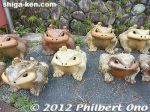
Frogs are another auspicious pottery piece. Sotoen Web site: shigarakiyaki.co.jpAug 27, 2012
|
|
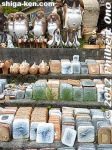
Aug 27, 2012
|
|
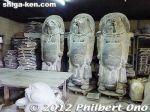
Large tanuki.Aug 27, 2012
|
|
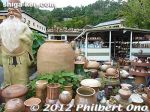
Pottery everywhere at Sotoen.Aug 27, 2012
|
|
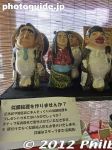
They even can make Shigaraki figurines based your likeness if you give them photos of your face.Aug 27, 2012
|
|
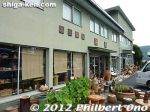
Sotoen gift shop.Aug 27, 2012
|
|
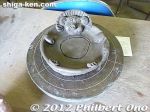
Another person got more creative. We were going to see the result in Sept.Aug 27, 2012
|
|
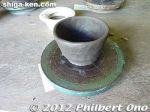
After maybe 20-30 min., my little bowl.Aug 27, 2012
|
|

Here's our block of Shigaraki clay.Aug 27, 2012
|
|

The instructor showed how to smooth the top edge with a wet cloth.Aug 27, 2012
|
|

First, an instructor demonstrated the basics of pottery making with a block of clay. Easy enough for anyone to make a simple bowl or cup.Aug 27, 2012
|
|
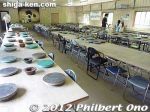
Another highlight of Sotoen was a pottery lesson for beginners. They have a huge pottery classroom.Aug 27, 2012
|
|
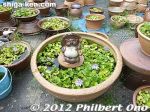
Aug 27, 2012
|
|
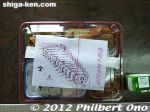
Bento lunch at Sotoen.Aug 27, 2012
|
|
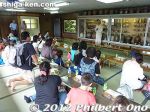
A talk about Shigaraki ware at Sotoen.Aug 27, 2012
|
|
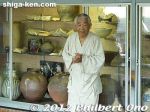
A talk about Shigaraki ware at Sotoen.Aug 27, 2012
|
|
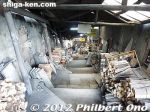
Steps along the side of the noborigama kiln.Aug 27, 2012
|
|
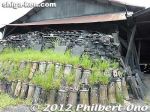
The top of the noborigama kiln.Aug 27, 2012
|
|
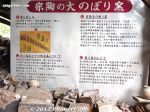
"Noborigama" kiln explanation in JapaneseAug 27, 2012
|
|

"Noborigama" kiln explanation in Japanese. It takes 40-50 days to fill the kiln, and 7-10 days to fire. 登り窯Aug 27, 2012
|
|
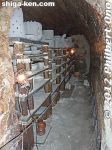
A noborigama chamber. The chambers get larger toward the top of the noborigama kiln. 登り窯Aug 27, 2012
|
|
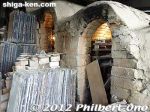
The heat from the furnace at the bottom chamber rises and seeps into all the chambers. 登り窯Aug 27, 2012
|
|
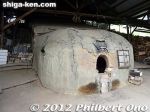
Sotoen's main attraction is this noborigama or sloping kiln. Japan's oldest noborigama. The bottom chamber is the furnace where they burn wood. 登り窯Aug 27, 2012
|
|
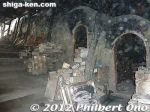
Sotoen's noborigama kiln is 15 meters wide, 30 meters long, and 3.5 meters high. It has eleven chambers going up a slope. 登り窯Aug 27, 2012
|
|
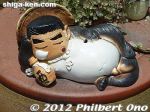
Crayon no Shinchan.Aug 27, 2012
|
|

They also have owls. This one has a camera.Aug 27, 2012
|
|
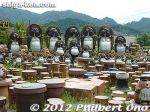
Aug 27, 2012
|
|
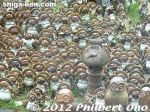
Smaller tanuki cost a few thousand yen.Aug 27, 2012
|
|
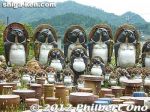
Tanuki for sale at Sotoen, Shigaraki.Aug 27, 2012
|
|
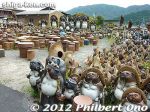
Aug 27, 2012
|
|
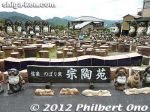
Photo op at Sotoen. They got almost everything you can imagine. The giant tanuki is priced as much as 700,000 yen.Aug 27, 2012
|
|

Overview of the heart of Sotoen.Aug 27, 2012
|
|
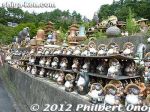
Racks and racks of Shigaraki tanuki or racoon dogs.Aug 27, 2012
|
|
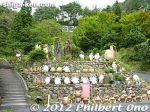
Aug 27, 2012
|
|
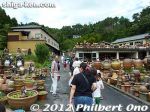
Shigaraki has a good number of pottery centers and Sotoen (宗陶苑) is major one. I visited for the first time in Aug. 2012. It covers a large ceramic park-like area.Aug 27, 2012
|
|
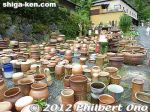
Sotoen has a very large number of Shigaraki pottery pieces outside in park-like tract. All for sale. Shigaraki ware is known for its weather-resistance, so they are suited for gardens and outdoor use.Aug 27, 2012
|
|
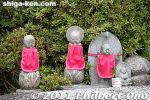
Jizo statues Jun 26, 2011
|
|
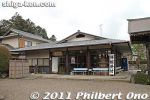
Rakuyaji temple office where you pay the 500 yen admission fee to enter the main Hondo hall (open 9:00 am - 5 pm, till 4 pm in winter). Pilgrims can also get the temple's autograph and seal in their pilgrimage book.Jun 26, 2011
|
|

About the Reiki sacred tree. 霊木Jun 26, 2011
|
|
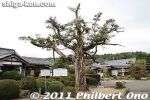
Reiki sacred tree. 霊木Jun 26, 2011
|
|

About the temple's sumo connection.Jun 26, 2011
|
|
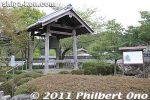
Rakuyaji temple's bell.Jun 26, 2011
|
|
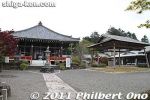
Rakuyaji temple Hondo hall and sumo ring. However, the seated Buddha is behind closed doors, and public viewing is rare. We can only see a picture of it. Photography is not allowed.Jun 26, 2011
|
|
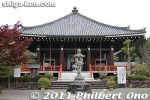
Rakuyaji temple main worship hall. Inside is Japan's largest statue of a seated Kannon Buddha with 11 faces. The Buddha is hidden, shown only once every 33 years. Last shown in fall 2018. 日本最大坐仏十一面観音菩薩 櫟野寺Jun 26, 2011
|
|
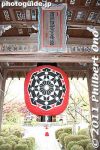
Rakuyaji temple gate and paper lantern.Jun 26, 2011
|
|
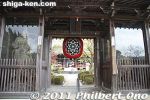
Jun 26, 2011
|
|
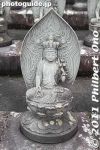
Jun 26, 2011
|
|
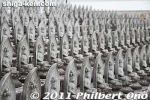
Jun 26, 2011
|
|
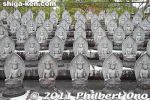
Jun 26, 2011
|
|
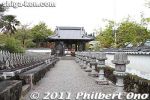
Way to Rakuyaji temple.Jun 26, 2011
|
|
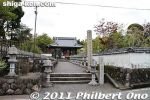
Rakuyaji temple entrance 櫟野寺 MAPJun 26, 2011
|
|
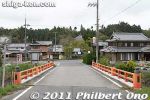
Red bridge near Rakuyaji temple.Jun 26, 2011
|
|
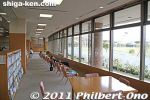
Inside the Public Library in Kafuka Yume no Mori park.Jun 26, 2011
|
|
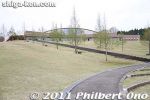
Public Library in Kafuka Yume no Mori park.Jun 26, 2011
|
|
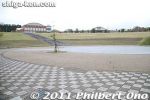
Kafuka Yume no Mori park 鹿深夢の森Jun 26, 2011
|
|
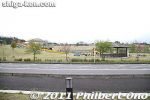
Kafuka Yume no Mori park across the street. 鹿深夢の森Jun 26, 2011
|
|
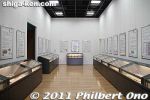
Room for changing exhibitions.Jun 26, 2011
|
|
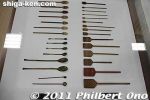
Jun 26, 2011
|
|
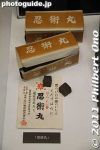
Jun 26, 2011
|
|
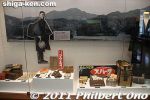
Jun 26, 2011
|
|
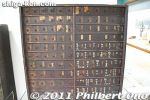
Medicine cabinet.Jun 26, 2011
|
|
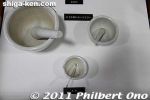
To make medicinal powder.Jun 26, 2011
|
|
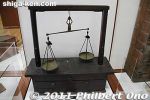
Jun 26, 2011
|
|

Jun 26, 2011
|
|
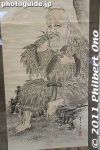
God of Medicinal HerbsJun 26, 2011
|
|

Hino-shonin merchants based in nearby Hino town helped to sell Koka's medicines.Jun 26, 2011
|
|

Mt. Ibuki in Maibara is also noted for many herbs since centuries ago.Jun 26, 2011
|
|

Jun 26, 2011
|
|

Jun 26, 2011
|
|

Medicine factories and companies in Shiga Prefecture.Jun 26, 2011
|
|
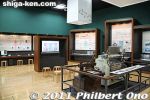
Jun 26, 2011
|
|
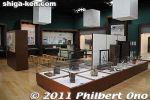
The Medicine Museum has a large permanent exhibition room.Jun 26, 2011
|
|
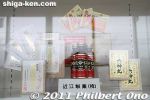
Jun 26, 2011
|
|

Jun 26, 2011
|
|
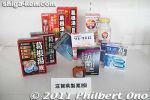
Medicines made by pharmaceutical companies in Shiga Prefecture.Jun 26, 2011
|
|

Display case showing medicines made by pharmaceutical companies in Koka.Jun 26, 2011
|
|

The rich medicinal herbs in Koka spawned numerous pharmaceutical companies in Koka.Jun 26, 2011
|
|
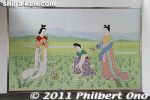
The Koka area was rich in medicinal herbs. This mural depicts women picking the herbs in Koka in the old days.Jun 26, 2011
|
|
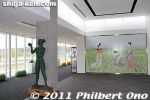
Inside the Kusuri Gakushukan Medicine Museum which is quite new. Phone: 0748-88-8110, Hours: 9:30 am - 5 pm, closed Mon. (open if a national holiday and closed on Tue. instead)Jun 26, 2011
|
|

Kusuri Gakushukan Medicine Museum across from Kafuka Yume no Mori park. 20-min. walk from Koka Station. くすり学習館 MAPJun 26, 2011
|
|

The old JR Koka Station (south side), photographed in 2004. It was a small station.Jun 26, 2011
|
|
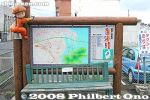
Sign on south side of Koka Station. There's a ninja character climbing up the sign, but the map does not show the ninja village or ninja house.Jun 26, 2011
|
|
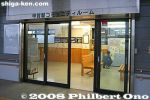
The south entrance has community room serving as an exhibiiton space. It also displays medicines made by Koka medicine makers. Many ninja families in Koka were medicine makers.Jun 26, 2011
|
|
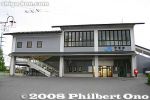
JR Koka Station, south entrance.Jun 26, 2011
|
|
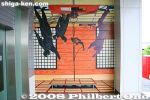
Suspended ninja in a painting next to the elevator. You supposed to sit on the floor and make like the ninja is coming after you.Jun 26, 2011
|
|
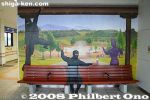
This painting uses a real bench where you can sit down and pose with the ninja. JR Koka Station on the JR Kusatsu Line, Shiga Prefecture.Jun 26, 2011
|
|
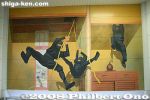
Ninja painting in Koka Station.Jun 26, 2011
|
|
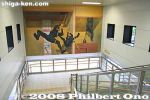
The stairway on the south side of Koka Station has this dramatic mural of ninja in action.Jun 26, 2011
|
|
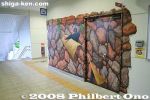
Near the turnstile entrance. These ninja wall murals are called "Trick Art." They look three-dimensional and you can interact with the paintings. You can pose within the painting itself. A brilliant idea. トリックアートJun 26, 2011
|
|
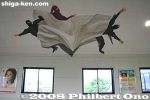
Ceiling painting of ninja appearing from a cloak. You can have someone "touch" the tip of the cloak.Jun 26, 2011
|
|
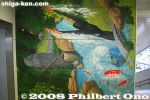
Wall mural sideways, showing ninja and a river.Jun 26, 2011
|
|
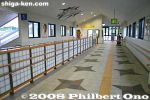
Koka Station's 2nd floor corridor has shuriken (ninja throwing knives) design on the floor.Jun 26, 2011
|
|
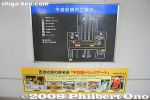
Map of Koka Station and a guide to the "Koka Station Trick Art." Seven wall murals of ninja paintings inside the station.Jun 26, 2011
|
|
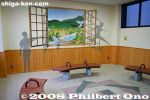
On the north side, the waiting room has this large painting. The shadow areas is where you can stand and pose for a picture.Jun 26, 2011
|
|

JR Koka Station north (Kitaguchi) side. Jun 26, 2011
|
|

My video of the Aburahi Matsuri. The yakko-furi procession reenacts the samurai coming to worship at the shrine. You have to watch this video to understand the soundless photos.Jun 26, 2011
|
|
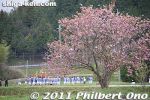
The next time the Aburahi Matsuri with yakko-furi procession will be held will be in 2021.Jun 26, 2011
|
|
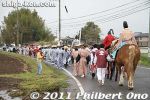
The procession incudes a group of shrine officials and shrine priests on horseback. They follow a rural route.Jun 26, 2011
|
|
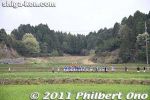
I declined to follow them all day long since their performance is repetitive. I spent the rest of the time renting a bicycle and Aburahi Station and saw other sights in the area.Jun 26, 2011
|
|
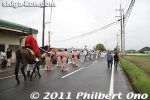
Jun 26, 2011
|
|
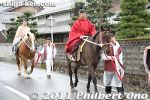
Shrine priest on horseback.Jun 26, 2011
|
|
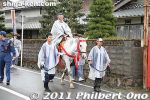
Jun 26, 2011
|
|
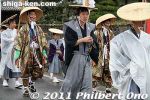
Jun 26, 2011
|
|
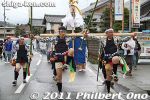
Jun 26, 2011
|
|
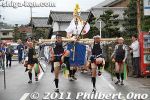
Jun 26, 2011
|
|
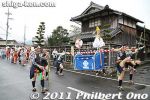
Jun 26, 2011
|
|
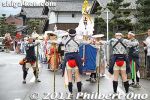
Jun 26, 2011
|
|
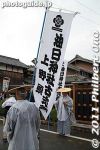
Jun 26, 2011
|
|
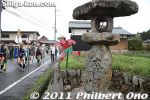
Jun 26, 2011
|
|
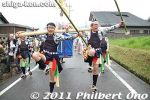
Jun 26, 2011
|
|
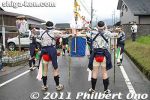
Jun 26, 2011
|
|
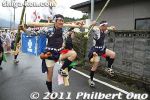
They repeat the same thing over and over. The hasami-bako yakko-furi unit dressed in red do not perform enroute. Apparently, they perform only at the major rest stops like at the shrine and Otabisho.Jun 26, 2011
|
|
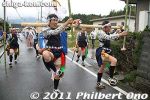
Jun 26, 2011
|
|
|
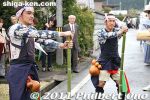
Every few minutes, the Nagamochi yakko-furi unit stops and sings the song as people in the neighborhood come out and watch.Jun 26, 2011
|
|
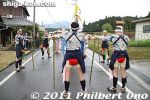
The procession proceeds across town on a 9 km circular route bringing them back to Aburahi Shrine in the late afternoon. They head for the Otabisho rest place.Jun 26, 2011
|
|
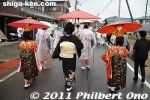
Jun 26, 2011
|
|
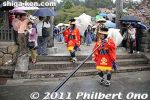
Jun 26, 2011
|
|
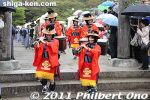
Jun 26, 2011
|
|
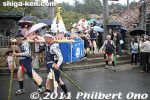
Jun 26, 2011
|
|
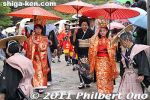
Jun 26, 2011
|
|
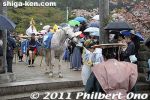
The procession includes the Sacred Horse. 神馬Jun 26, 2011
|
|
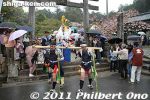
Jun 26, 2011
|
|
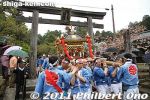
Jun 26, 2011
|
|
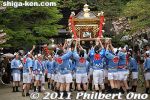
Jun 26, 2011
|
|
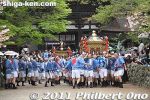
Jun 26, 2011
|
|
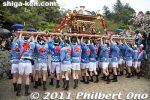
Jun 26, 2011
|
|
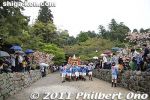
Leaving the shrine. The procession is headed by the two mikoshi.Jun 26, 2011
|
|
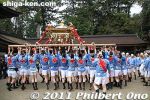
Jun 26, 2011
|
|
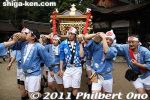
Jun 26, 2011
|
|
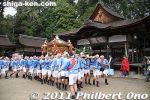
Jun 26, 2011
|
|
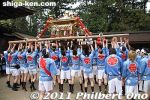
Jun 26, 2011
|
|
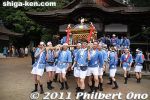
They carried the mikoshi around a few times.Jun 26, 2011
|
|
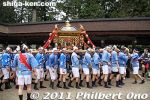
Jun 26, 2011
|
|
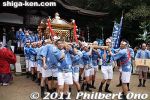
Jun 26, 2011
|
|
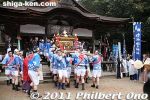
At around 11:30 am, the two mikoshi portable shrines leave the shrine.Jun 26, 2011
|
|
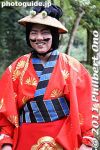
During the Shinto ceremony, the rest of the procession take a break.Jun 26, 2011
|
|

Jun 26, 2011
|
|
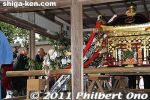
Shinto ceremony. 宮立ちJun 26, 2011
|
|
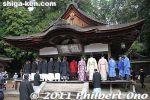
After everyone arrives at the shrine, they hold a Shinto ceremony.Jun 26, 2011
|
|
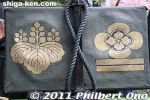
Crests on the hasami-bako chests.Jun 26, 2011
|
|
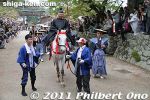
The priest on horseback arrives at Aburahi Shrine. 頭殿Jun 26, 2011
|
|
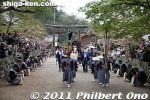
Jun 26, 2011
|
|
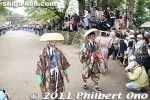
The yakko-furi are followed by low-ranking samurai called Okado (or Kachi). 徒士Jun 26, 2011
|
|
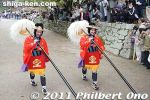
Keyari-yakko carrying fur-tipped spears enter the Romon Gate. 毛槍奴Jun 26, 2011
|
|
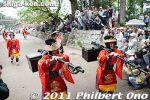
Jun 26, 2011
|
|
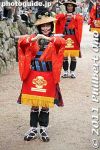
Jun 26, 2011
|
|
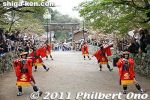
Jun 26, 2011
|
|
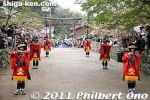
Jun 26, 2011
|
|
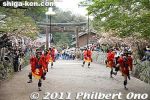
They slowly make their way to the shrine as they perform their song and dance.Jun 26, 2011
|
|
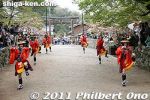
Jun 26, 2011
|
|
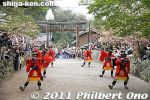
Behind the four Hasami-bako yakko box bearers are the Keyari-yakko who are two men carrying fur-tipped spears. 毛槍奴Jun 26, 2011
|
|
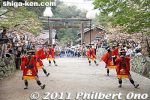
Jun 26, 2011
|
|
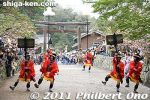
Jun 26, 2011
|
|
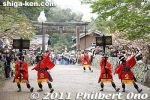
Jun 26, 2011
|
|
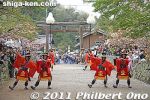
Jun 26, 2011
|
|
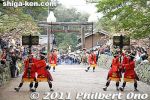
Hasami-bako yakko box bearers change hands as they pass on the box to the other.Jun 26, 2011
|
|
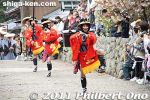
Jun 26, 2011
|
|
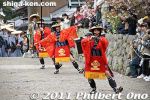
Jun 26, 2011
|
|
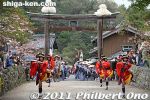
Jun 26, 2011
|
|
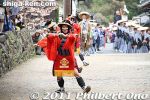
Jun 26, 2011
|
|
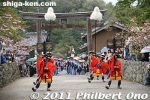
挟箱奴Jun 26, 2011
|
|
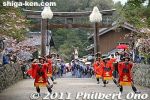
Jun 26, 2011
|
|
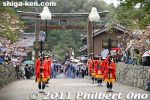
The second yakko-furi unit are the Hasami-bako yakko bearers who carry a square box. They too sing and dance. 挟箱奴Jun 26, 2011
|
|
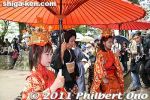
Two chigo girls and a court lady. 女房と稚児Jun 26, 2011
|
|
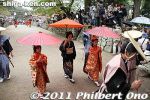
Two chigo girls and a court lady. 女房と稚児Jun 26, 2011
|
|
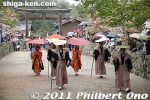
Jun 26, 2011
|
|
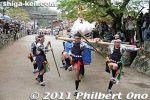
長持奴Jun 26, 2011
|
|
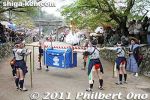
The crate is carried by two men in the front and one man in the back.Jun 26, 2011
|
|
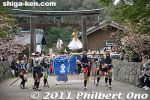
The Nagamochi-yakko sing a humorous song as they carry the long crate in very stylized strides. Every so often, they stop and sing. 長持奴Jun 26, 2011
|
|
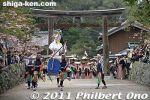
The Nagamochi yakko (luggage coolies) group arrive at the shrine. 長持奴Jun 26, 2011
|
|

About the old tree.Jun 26, 2011
|
|
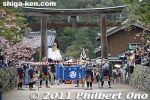
The procession's yakko-furi (medieval marching dancers) consists of three units. This first unit is the Nagamochi-yakko who are coolies carrying a long crate. They mimick the laborers who carried luggage for traveling samurai contingents.Jun 26, 2011
|
|
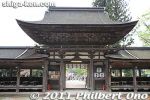
Back of the Romon Gate.Jun 26, 2011
|
|
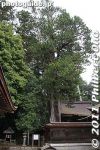
35 meter-high tree, about 750 years old next to the Honden hall.Jun 26, 2011
|
|
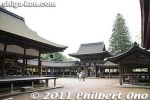
Aburahi Shrine was where the Koka ninja gathered and held important meetings.Jun 26, 2011
|
|

About Aburahi Shrine.Jun 26, 2011
|
|
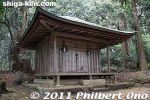
Storehouse.Jun 26, 2011
|
|
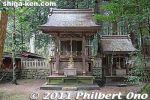
Aburahi Shrine's afiliate shrines.Jun 26, 2011
|
|
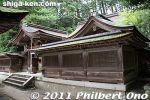
Aburahi Shrine Honden hall.Jun 26, 2011
|
|
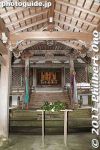
Aburahi Shrine Honden hall.Jun 26, 2011
|
|
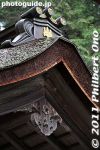
Jun 26, 2011
|
|
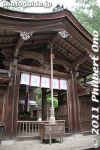
Aburahi Shrine also worships Sarutahiko (猿田彦神) god of strength and resilience and Mizuhanome (罔象女神) goddess of wells. This is the Honden hall. Jun 26, 2011
|
|
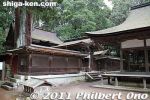
Aburahi Shrine Honden hall on the left. Aburahi Shrine is dedicated to a god named Aburahi Daijin, the god of oil.Jun 26, 2011
|
|
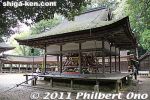
Haiden HallJun 26, 2011
|
|
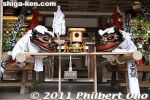
Lion heads.Jun 26, 2011
|
|
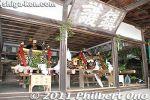
Jun 26, 2011
|
|
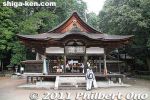
Haiden Hall with two mikoshi portable shrines.Jun 26, 2011
|
|
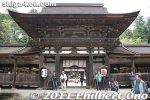
Romon Gate of Aburahi Shrine. MAPJun 26, 2011
|
|
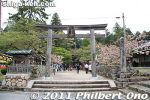
Aburahi Shrine torii. There's a short path leading to the Romon Gate and this is where the yakko procession performs as they proceed to the shrine. Jun 26, 2011
|
|
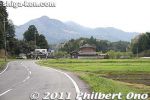
Walking to Aburahi Shrine.Jun 26, 2011
|
|
| 1139 files on 5 page(s) |
1 |
 |
 |
|